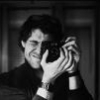Shooting Ektar 100. Rate at box speed or 50?
-
Recently Browsing 0 members
- No registered users viewing this page.
-
Similar Content
-
- 20 replies
- 1,424 views
-
- 2 replies
- 132 views
-
- 7 replies
- 510 views
-
- 6 replies
- 364 views
-
- 14 replies
- 778 views
-





Recommended Posts
Join the conversation
You can post now and register later. If you have an account, sign in now to post with your account.
Note: Your post will require moderator approval before it will be visible.